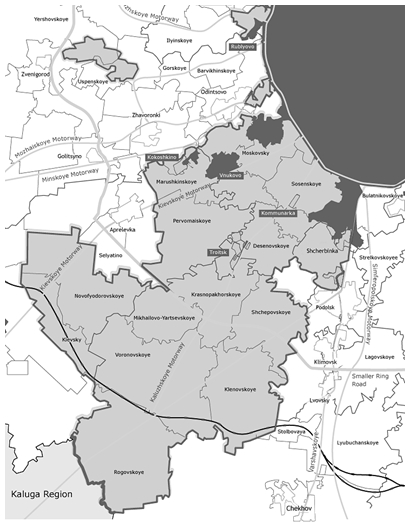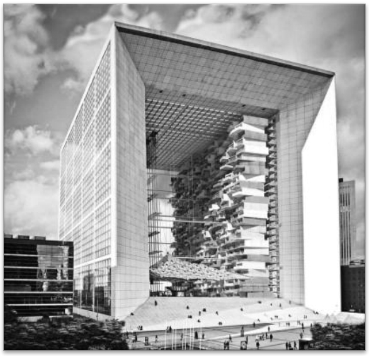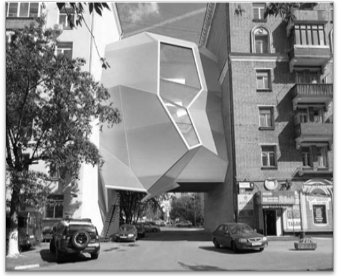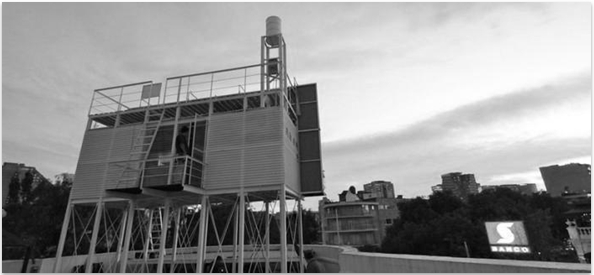РЕКОНСТРУКЦИЯ И АДАПТАЦИЯ - АЛЬТЕРНАТИВЫ РАЗВИТИЯ ДОСТУПНОГО ЖИЛЬЯ В КОНТЕКСТЕ ПОСТ-СОВЕТСКОЙ МОСКВЫ
Ортис Урибе Х.А.
Магистр, Российский Университет Дружбы Народов
РЕКОНСТРУКЦИЯ И АДАПТАЦИЯ - АЛЬТЕРНАТИВЫ РАЗВИТИЯ ДОСТУПНОГО ЖИЛЬЯ В КОНТЕКСТЕ ПОСТ-СОВЕТСКОЙ МОСКВЫ
Аннотация
Настоящая работа направлена на содействие обсуждению альтернатив для развития урбанистических стратегий, в контексте города Москвы, которые способны справиться с требованием сегодняшних городов - адаптивностью, целостностью и устойчивым ростом.
Ключевые слова: Реконструкция, градостроительство, жилье.
Ortiz Uribe J.A.
Postgraduate student, Peoples Friendship University of Russia
RECONSTRUCTION AND ADAPTATION - DEVELOPMENT ALTERNATIVES FOR AFFORDABLE HOUSING IN POST-SOVIET MOSCOW
Abstract
The present work aims to promote the discussion of alternatives for the development of urban housing strategies that are able to cope with today’s cities’ demand for adaptive, holistic and sustainable planning, within the context of the city of Moscow.
Keywords: Reconstruction, Urban Planning, Housing.
Since the dissolution of the USSR, cities in Russia have been subject to major structural transformations. Political changes, new economical constraints and demographics are reshaping the behavior of cities. The general shift of hierarchies after the restructuring of the country’s economics have strengthened Moscow’s hegemonic role. And as the radius of influence of the city is widened, immigration rates both from the inside and outside of Russia are proportionally scaled up. The housing demand has been intensified, and so has the influence by international quality standards and a market economy [1].
Since the expropriation of private housing began, the major share of the cities’ buildings was gradually brought under the control of the state. The soviet administration of construction and planning marked a turning point in the development of Western and East European cities. Unlike housing in capitalist Europe or America, in the Soviet Union, the growth of the city was exempt from the influence of speculation and was therefore spared from the uncontrolled urban sprawl to which other nations without these restrictions were subject to.
Today cities in Russia are being increasingly influenced by the international market and the emerging Russian middle class which demands better living conditions. Failing to cope with contemporary western standards, the housing complexes built during the soviet times are becoming burden. The explosion towards the periphery was unleashed, and the relatively young Real State companies in Russia have already positioned themselves as a powerful vector in the development of urban policies. In 2012, the Moscow administration announced an enormous expansion of the city’s boundaries [Fig. 1]. This will provide to the investors the land they lacked before and presumably drive the city’s resources and investments towards New Moscow.

Fig.1 - Map of Moscow boundary expansion
The costs in infrastructure, however, are enormous. The phenomenon of urban sprawl is still poorly understood, as it was virtually unknown to former Soviet cities until 20 years ago. But there is vast evidence of success and failure in the development of urban strategies in western countries. During the last 30 years, the global discourse on urbanism has shifted away from the traditional planning of Unwin’s Garden City and Le Corbusier’s Ville Radieuse towards densification, effective use of ground area, and mix of uses in cities.
Currently, the high costs of land and infrastructure make it difficult for developers to produce quality housing projects that can be affordable for the working class, while the buildings inside the city continue to decay and the rents steadily increase. Provided that the acquisition of land for development, and the costs of creating new infrastructure will not vary significantly, there is little spectrum left for quality in affordable living. Reconstruction and adaptation, on that basis could possibly become a more cost effective strategy for the city. A strategy based on salvaged infrastructure, additions and modifications of small to medium scale that focuses investment inside the current boundaries of the urban mass and functions as regenerator of misused spaces.

Fig.2 - Pocket of Active resistance by Stephane Malka
The basis of such approach is the correct identification of potential subjects for transformation. Making use of the existing boundaries of outdated buildings, misused infrastructure or built space, and adapting it to serve a purpose other than the one it was made for, this strategy aims to maximize the active use of current city areas while reducing the need for urban sprawl.
Reconstruction in this context should not be read as the simple addition of elements or parts to confined boundaries or private property, but as the rehabilitation and reorganization of the urban tissue by providing space with use. The parcel systems and the abstract geometrical subdivision of space inherited from the agrarian context has no longer place in this model of rebuilt city, for the terrain has become a subject, a built form. As such, the constraints to which the new forms are subject to grow exponentially more complex, as does the faculty for these new elements to influence the surrounding areas. They are all part of a joint system of organized complexity [4].
For every spot in the city there is a potential transformation, each of them unique as the circumstances that engendered it. And unlike current developments in Moscow, the investment can and should be of a much smaller scale, thus adding to diversity (thing which in post-soviet cities is lacking due to the systematical repetition of standard buildings) and opening the market to new entrepreneurs. Constructions, adaptations and annexes of different types, sizes and characteristics can provide a more diverse and rich set of options for the new middle class.

Fig.2.2 - Office Space by Za bor architects
Although these sprouts of urban growth can only be different, by definition, they share the same hybrid nature. They blend the typological basis in order to exist. Hence their uses are not to be limited to the regular pattern but on the contrary, they should lean towards new schemes and new possibilities of synergy. Housing can become a productive element by itself by incorporating complementary features capable of generating additional income for the owner. Examples of such approach range from energy production trough solar panels, to hydroponic farms and advertising billboards. These adaptations to the urban scene could also be regarded as business opportunities. New dwellings and new dwellers will play the role of micro entrepreneurs and not just consumers.

Fig.2.3 - Billboard House in Mexico City by Gomez Trevilla
Before aiming to expand the city’s boundaries, there should be a major revision of the current land use. Wherever there is room for improvement, wherever new infrastructure can be built, there could be the future of housing; not as parasitic additions, but symbiotic agents that enliven space and improve the surrounding conditions.
References
- ARELLANO, Blanca. Roca, Joseph. The Urban Sprawl in Megacities. Technical University of Catalonia.
- BECKER, Charles et.al. Russian urbanization in the Soviet and post-Soviet eras. International Institute for Environment and Development. United Nations Population Fund. Urbanization and Emerging Population Issues Working Paper 9. November 2012.
- FELDMAN, Boris, et. al. Urban and natural transformations of agricultural lands in Moscow. Real Corp 2009
- JACOBS, Jane. The Death and Life of Great American Cities. Vintage Books. New York, 1961
- KUROKAWA, Kisho. The Philosophy of Simbiosis. Academy Editions. New York. 1994.
- Moscow City Government. Map of Moscow boundary expansion. http://www.mos.ru/en/about/borders/
